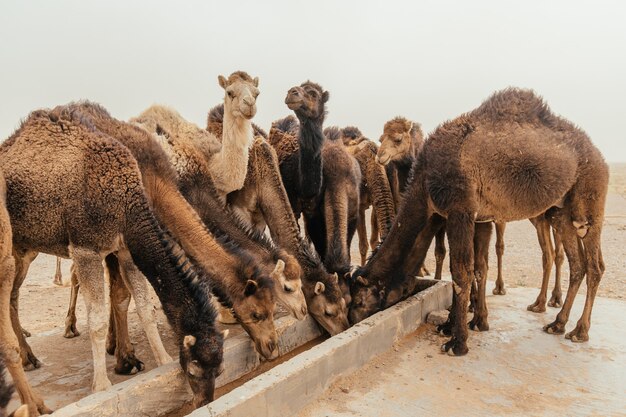Table of Contents
ToggleIntroduction
South America, known for its diverse wildlife and unique ecosystems, is home to a fascinating group of animals that share a distant kinship with the camels of the Old World. While these South American camelids are distinct from their Old World relatives, they have remarkably adapted to the Andean environment, making them a vital part of the region’s culture and economy. In this article, we will explore the rich world of South American kin of a camel, including llamas, alpacas, vicuñas, and guanacos, and their unique roles in the continent.
The Llamas
Llamas, with their striking appearance and gentle disposition, are the most iconic of South American camelids. These sturdy animals have been domesticated for centuries and are primarily used as pack animals in the Andean region. Their long history of companionship with humans and their ability to carry heavy loads through challenging terrains make them invaluable to the local communities.
The Alpacas
Alpacas, close relatives of llamas, are celebrated for their delicate and luxurious wool. These small, fluffy creatures are sheared for their prized fleece, which is highly sought after for its softness and warmth. Alpacas have contributed to the textile industry and become an essential source of income for many Andean communities.
Vicuñas and Guanacos
Vicuñas and guanacos, on the other hand, are the lesser-known members of the South American camelid family. These wild and elegant animals roam the high-altitude regions of the Andes. Vicuñas are mainly known for their excellent wool, making them the subject of conservation efforts to protect their populations.
Camels in South America
It’s interesting to note that Old World camels were introduced to South America by European colonizers but have remained limited in number. The South American camelids, however, have thrived in this new environment, adapting to the unique challenges of the Andes.
Adaptations to the Andean Environment
South American camelids have developed impressive adaptations to survive in the Andean highlands. These include efficient digestion systems, strong lungs, and padded feet to navigate the terrain.
Cultural Significance
Llamas and alpacas, in particular, hold a special place in South American culture and tradition. They are featured in various ceremonies and rituals, symbolizing prosperity and good fortune.
Farming and Sustainability
There has been a growing emphasis on sustainable practices in camelid farming in recent years. This includes responsible breeding and the promotion of ethical treatment of these animals.
Breeding and Hybridization
The possibility of breeding and hybridization between different South American camelid species is a topic of interest. It raises questions about the potential benefits and drawbacks of such practices.
Conservation Efforts
Conservationists are actively working to protect the vicuñas and guanacos’ habitats and ensure their populations’ sustainability. These efforts are vital for the preservation of these unique creatures.
Commercial Uses
The commercial uses of South American camelid products extend beyond their wool. From meat to leather, these animals provide various economically significant resources to the region.
Challenges and Threats
Despite their resilience, South American camelids face habitat loss and climate change challenges. These factors threaten the delicate balance of their ecosystems.
Research and Future Prospects
Ongoing research explores South American camelids’ genetic and ecological aspects, paving the way for future developments in camelid farming and conservation.
South American Camelids in the Wild
For those fortunate enough to visit the Andean highlands, encountering these remarkable animals in the wild is a once-in-a-lifetime experience. Seeing these unique creatures against the backdrop of the majestic mountains is genuinely awe-inspiring.
Conclusion
South American camelids, including llamas, alpacas, vicuñas, and guanacos, have not only shaped the landscape of the Andes but have also embedded themselves in the heart of South American culture. Their adaptations, contributions to the economy, and cultural significance make them truly remarkable creatures.
Frequently Asked Questions (FAQs)
- Are llamas and alpacas the same species?
No, llamas and alpacas are different species within the South American camelid family, each with unique characteristics and uses.
- Why is vicuña wool so expensive?
Vicuña wool is one of the finest and rarest in the world, making it highly sought after. The price reflects its scarcity and exceptional quality.
- How are South American camelids adapted to high-altitude living?
South American camelids have evolved specialized features, such as efficient lung function and padded feet, to thrive in the high-altitude Andean environment.
- What are the biggest threats to South American camelids today?
The main threats include habitat loss, climate change, and unsustainable practices in farming and resource extraction.
- Are South American camelids at risk of extinction?
While some species are endangered, conservation efforts aim to protect and preserve these unique animals for future generations.





